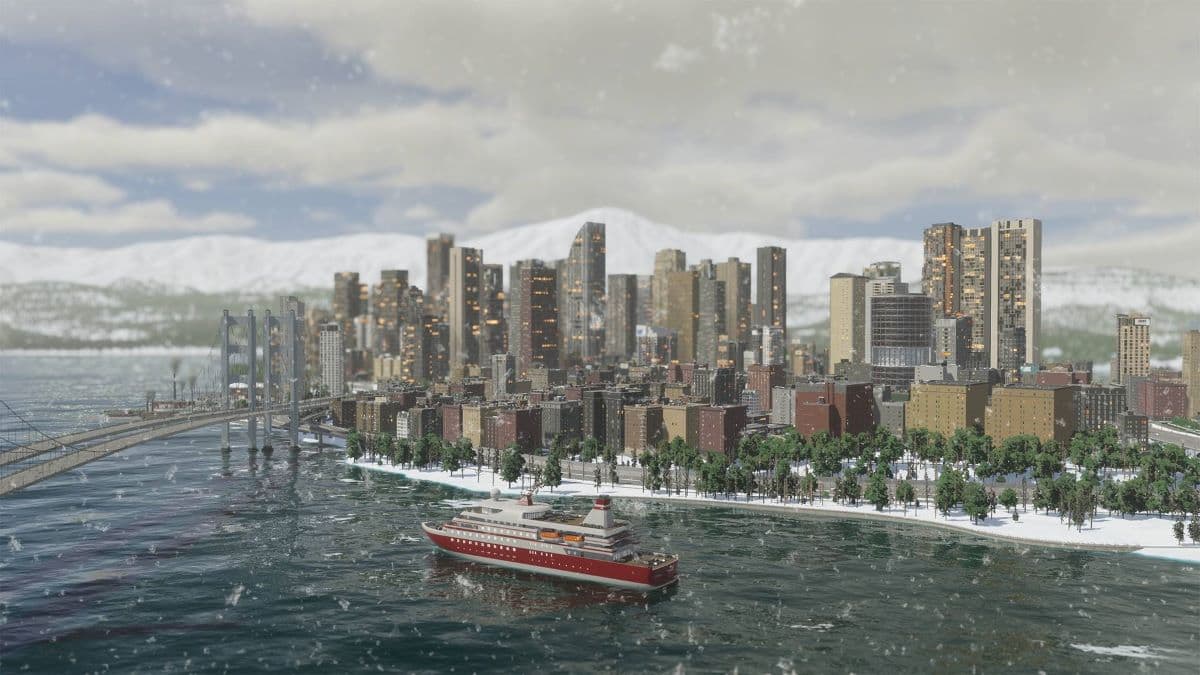Curious whether Cities: Skylines 2 will feature natural disasters? Stick around. We’ll cover everything you need to know about weather conditions you’ll face in the game to help you keep your city safe from harm.
Set to launch on PC this week, Cities: Skylines 2 promises a plethora of quality-of-life improvements that franchise fans are sure to appreciate. In the new title, each city you create is brought to life in breathtaking detail, bolstered by the game’s ambitious system requirements, file size, and miniscule map tiles. Altogether, this makes for lively living spaces curated to your liking as the city mayor. Of course, metropolitan living is not without risk. You’ll need to account for the elements as you lay the groundwork for your city, or else pay the toll of reparations following storms and the like.
Will Cities: Skylines 2 Have Natural Disasters?
As you design your city in Cities: Skylines 2, you’ll need to prepare to weather natural disasters and other phenomena. In a deep dive from Paradox Interactive, the team described these potentially devastating events as both random and challenging.
Taking the proper precautions can help you prepare for a variety of harmful weather conditions. However, disasters cannot be entirely avoided. Because of this, you should aim to minimize damage to buildings and structures and prevent the overwhelm of healthcare and rescue services.
- Deep Simulation: Make choices that have ripple effects across the city. Intricate AI and economic systems mean players will need to strategize, problem solve and react to changes, challenges and opportunities.
- Epic Scale, Endless Possibilities: Build a thriving metropolis without compromise. In Cities: Skylines II, players will be able to build sky-high and across the map to realize their dream city like never before.
- Cities That Come Alive: Follow the lives of individual citizens, from love and loss to wealth and well-being. Player decisions will shape the lives of their city’s citizens.
- A Dynamic World: Pick a map to set the climate and biome of the city. These natural forces will shape the growth of players’ cities as they contend with rising pollution, changeable weather and seasonal challenges.
- English (Playback Language)
Weather Conditions in Cities: Skylines 2
You’ll need to prepare for a variety of weather conditions that have the potential to lead to disaster in Cities: Skylines 2. These include forest fires, hail storms, and tornadoes. Each has the potential to cause an inordinate amount of damage to buildings and infrastructure, upping the stakes with changes in the season and climate. As city mayor, you’ll have to take on the responsibility of damage control before it’s too late. However, preparations vary from one threat to the next.
Forest Fires
Forest fires can affect cities within any climate, so you’ll need to know how to deal with the effects to minimize spread and damage. A telltale sign that your city is at risk of enduring a wildfire is exceptionally dry weather, which is brought on by low precipitation levels and high temperatures. If left unchecked, these fires can spread into the city, causing damage to buildings.
To prevent forest fires, your best bet is to place Firewatch Towers throughout wooded areas. Of course, you’ll also need a team within the city to combat any potential wildfires. In this case, you should also place a Firefighting Helicopter Depot in a central area to send help by air, as fire trucks won’t be effective against a forest fire.
Hail Storms
Hail is most likely to appear when temperatures are low, but not freezing. While they may not pose a dire threat, hail storms can cause physical damage throughout cities under cool conditions. They can also lead to traffic accidents, so you’ll want to watch out for an incoming storm. Otherwise, you’ll need to pay for repairs when the storm subsides. As such, you should instruct citizens to stay indoors while hail persists.
Tornadoes
Tornadoes have the greatest potential to cause harm in Cities: Skylines 2. These weather phenomena can affect buildings, vehicles, and citizens as they tear through the city. There’s no way to tell whether a tornado will cause minimal damage or completely destroy your city’s infrastructure, so it’s necessary to take action as soon as possible.
While they can’t be avoided, you can prepare for tornadoes by placing Small and Large Emergency Shelters throughout the city. This way, every citizen will have access to safety when the tornado strikes. The Early Disaster Warning System can also be a lifesaver, as it can help you spot incoming natural disasters and prompt citizens to seek shelter. Once ordered, evacuation buses will deploy and lend their services to those in need. Schools, clinics, and hospitals will be prioritized on their routes.
The better you prepare for different weather conditions, the better your city will fare in the face of danger. For more on Cities: Skylines 2, check out these additional guides from our team:



 0 Comments
0 Comments 
